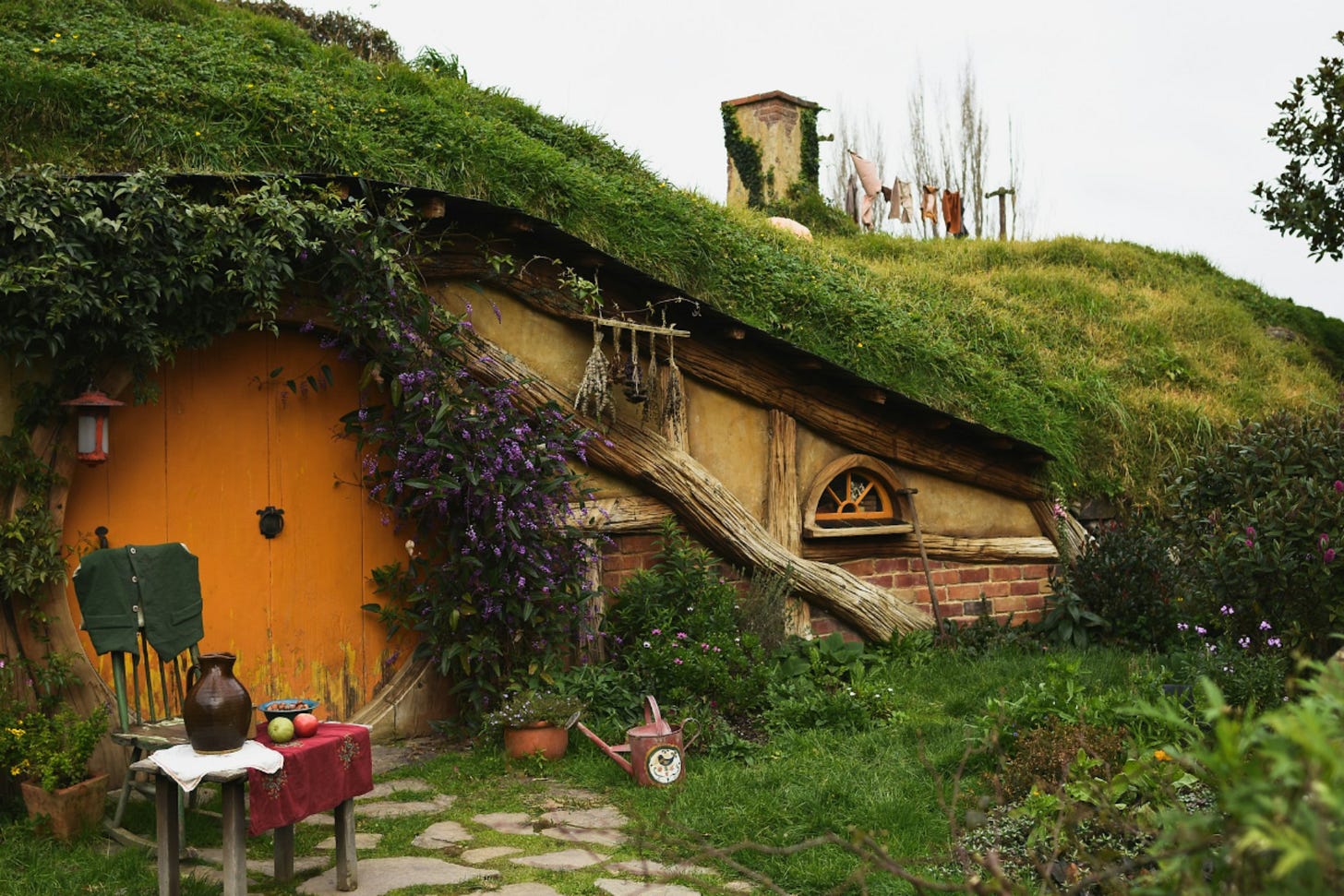
Anyone familiar with J.R.R. Tolkien’s work may know that I lifted the name of my Substack here from the pages of The Fellowship of the Ring. More specifically, Crickhollow is the name of the house, or the area, in the Shire where Frodo Baggins moves to after realizing that the magic ring left in his possession by his uncle Bilbo is actually the One Ring forged by the Dark Lord Sauron and that it must be taken out of the Shire. Crickhollow is a more convenient location for him to stealthily exit the Shire for his journey than the traditional Baggins home of Bag End.
There are several reasons that I chose to call my new Substack here “Crickhollow,” with one of the reasons being that I simply like the word itself. It evokes in me the thought of a grounded place in general, not flashy, but specifically grounded in nature. Which is something you would expect given that it is inhabited by hobbits. Tolkien was obsessed with language, as evidenced by the extremely detailed languages he created for the various peoples in his Middle-Earth legendarium. While he may not have given the name “Crickhollow” as much thought as some of the other words or names in Middle-Earth, it has always stood out to me nonetheless.
Then there is the imagery of Crickhollow as described by Tolkien in the book, emphasis mine:
It stood back from the lane in the middle of a wide circle of lawn surrounded by a belt of low trees inside the outer hedge. Frodo had chosen it, because it stood in an out-of-the-way corner of the country, and there were no other dwellings close by. You could get in and out without being noticed. It had been built a long while before by the Brandybucks, for the use of guests, or members of the family that wished to escape from the crowded life of Brandy Hall for a time. It was an old-fashioned countrified house, as much like a hobbit-hole as possible: it was long and low, with no upper storey; and it had a roof of turf, round windows, and a large round door…
It was a pleasant, comfortable, welcoming place; and [Frodo] found himself wishing that he was really coming here to settle down in quiet retirement.
Pleasant, comfortable, and welcoming, and traditionally a place to get away from the hustle and bustle of everyday life. That is exactly what I would like for this Substack to represent to anyone who deigns to read it, and for myself as the writer. I don’t think that I could reasonably ask for more.
In my opinion, Crickhollow also represents the actual starting point of Frodo and the rest of the hobbits’ journey. While it would not be unfair to say that Frodo’s, and Sam’s, journey begins the moment they leave Bag End—the danger to them begins almost the second they shut the door as a Nazgûl, a rider cloaked in black under the dominion of Sauron, shows up to Frodo’s neighbor’s door looking for Frodo while Frodo is still within earshot—the journey from Hobbiton to Crickhollow is still within the Shire and the world that Frodo is familiar with. It’s not until the Hobbits leave Crickhollow for the Old Forest and the world beyond that their journey into the unknown truly begins. And this Substack is part of my journey into the unknown.
I was not raised to be religious in any sense, so finding myself a Christian in my mid-30’s is quite a surprise, and a little daunting. Unlike the hobbits, my journey is not into fear and darkness and death in the lands of Mordor, but it is no less a journey and one that will last for the rest of my life. And so, given my love of Tolkien’s writing, of hobbits in particular, and the imagery of Crickhollow in the novel, it seemed fitting to me to give this Substack the name of Crickhollow.




